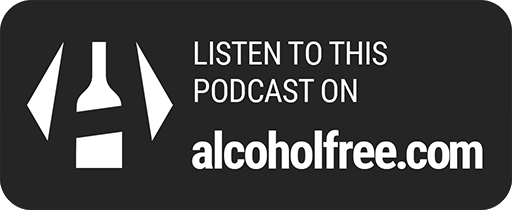Molly Watts

Molly Watts, Author & Coach
Think Thursday: Discomfort-Why It's Not a Red Flag
Think Thursday: Discomfort-Why It's Not a Red Flag
Think Thursday: Discomfort-Why It's Not a Red Flag
Thursday 5th June 2025
Discover why discomfort signals growth, not danger, in this engaging episode of The Alcohol Minimalist Podcast with Molly Watts.
8 minutes
Informative
Supportive
Encouraging
Inspiring
Hopeful
About this podcast
Author:
Molly Watts
Overview:
Categories:
Navigating Alcohol Dependency
Understanding Addiction & Recovery
Mindfulness & Emotional Wellbeing
Navigating Intimate Relationships
Creative Recovery Journeys
Links:
Visit site
Episodes:
318 (View all)

Do you want to link to this podcast?
Get the buttons here!Embrace Discomfort: It's a Sign of Growth
Episode Overview
- Discomfort is a sign of change, not danger.
- The lower brain misinterprets discomfort as a threat.
- Embrace discomfort with curiosity to activate your higher brain.
- Struggle indicates your brain is building new connections.
- Confidence follows action through discomfort.
"Discomfort isn't a red flag. It's a signal to stay curious."
In this Think Thursday episode of The Alcohol Minimalist Podcast, Molly Watts tackles a feeling everyone encounters but often misinterprets: discomfort. She explains how discomfort is not a sign that something's gone awry, but rather a signal that change is underway. Molly draws on neuroscience to reveal why our lower brain, the survival-focused part, misreads discomfort as danger. This primitive brain, responsible for keeping us alive, tends to avoid pain and seek pleasure.
However, Molly assures us that discomfort doesn't mean we're unsafe—it's simply our lower brain doing its job based on outdated wiring. Through engaging anecdotes and relatable metaphors, Molly illustrates how the higher brain—the logical prefrontal cortex—can override these primitive alerts. Discomfort isn't a cue to stop; it's an invitation to explore whether it's a sign of danger or growth. Molly references experts like Dr. Andrew Huberman and Dr.
Joe Bowler to support her points, noting how friction in learning is not just normal but essential. She likens it to building muscle: you don't get stronger by staying comfortable, but by creating controlled resistance. Molly encourages listeners to embrace discomfort with curiosity, asking questions that open up space between emotion and response. This approach activates the higher brain and builds resilience. The takeaway?
Discomfort is not a red flag—it's a signal to stay curious and allow your brain to grow. So, if you're feeling stuck or unsure, this episode might be the nudge you need to lean into change with awareness and compassion.
